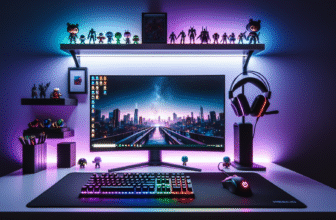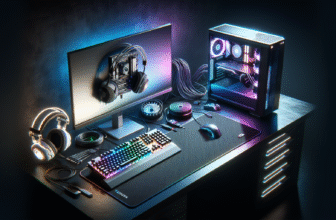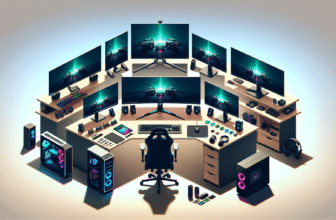Designing the Perfect Dual Monitor Desk Environment
Key Considerations for an Optimal Dual Monitor Desk Setup
Ergonomics and comfort are fundamental when setting up a dual monitor desk environment. The goal is to reduce strain on your neck, back, and eyes while boosting productivity. Position your monitors at eye level and approximately an arm’s length away to prevent hunching or leaning. Utilize adjustable monitor arms to achieve the perfect height and angle for your viewing comfort.
Choosing the Right Desk and Space Management
An ideal desk for a dual monitor setup should be spacious enough to accommodate both screens, your keyboard, mouse, and any additional peripherals. Consider a desk with a built-in cable management system to keep things tidy. L-shaped desks or adjustable standing desks can offer flexibility and additional space for organizing documents or other work essentials.
Monitor Selection and Settings
Selecting the right monitors is crucial. Look for monitors with thin bezels for a nearly seamless display experience when placed side-by-side. Matching the resolution and size of the monitors ensures consistency, improving multitasking efficiency. Adjust the brightness and contrast settings to reduce eye strain and ensure an optimal viewing experience throughout the day.
Lighting and Ambiance
The right lighting can significantly impact your work experience. Avoid placing monitors directly under bright lights, which can lead to glare. Instead, opt for adjustable lamps or indirect lighting to reduce eye strain. Color temperature also plays a role; warmer tones are generally more relaxing, whereas cooler lighting can boost alertness.
Chair Selection and Posture Support
Selecting a high-quality ergonomic chair can enhance your comfort significantly. Look for chairs with adjustable height, lumbar support, and armrest options to maintain a healthy posture. Your feet should rest flat on the floor, with your thighs parallel to the ground. Adjust the chair height to align your wrists with your keyboard to avoid strain.
Keyboard and Mouse Placement
Your keyboard and mouse should be positioned directly in front of you, with your elbows at a 90-degree angle. Consider using an ergonomic keyboard and mouse to minimize wrist strain, especially if you spend many hours typing or clicking. A keyboard tray can help keep your desk surface more organized and ergonomically friendly.
Cable Management Solutions
A clutter-free desk promotes efficiency and reduces distractions. Utilize cable management tools like cable clips, sleeves, or trays to keep your cords organized and out of sight. A wireless keyboard and mouse can also help minimize the number of cables on your desk.
Incorporate Personal Touches
Personalize your workspace to foster creativity and comfort. Include plants, art, or photos that bring you joy and motivate you throughout the day. Personal touches can transform your desk into a more welcoming and inspiring environment.
Technology and Tools for Enhanced Productivity
Incorporate productivity tools and software that streamline workflows, such as task management apps or note-taking software. Additionally, using a docking station can facilitate easy connection to external devices, further enhancing your workstation’s functionality.
Regular Breaks and Workspace Arrangement
Taking regular breaks is essential for maintaining focus and reducing fatigue. Arrange your workspace to encourage movement, such as placing the printer or filing cabinet a short walk away. This encourages you to stand and stretch, which is beneficial for your overall health.
Acoustic Environment
Reduce noise distractions by using noise-canceling headphones or adding soundproofing elements to your office. A quieter environment allows for greater concentration and productivity.
Monitor Calibration for Professional Work
For those using the dual monitor setup for creative work, such as graphic design or video editing, calibrating your monitors for accurate color representation is essential. Tools and software that can help in calibration ensure that what you see on the screen reflects true colors.
Incorporating Green Features
Consider eco-friendly options when setting up your workspace. LED lighting, energy-efficient monitors, and sustainably sourced desk materials contribute to a greener office environment and potentially lower utility costs.
Regular Assessment and Adjustment
Regularly reassess and adjust your setup to accommodate changing work needs or preferences. What worked initially might need adapting as your tasks evolve, keeping ergonomics and productivity in mind.
By carefully considering each aspect of your dual monitor desk environment, you create a comfortable, organized, and efficient workspace that supports and enhances your productivity.







